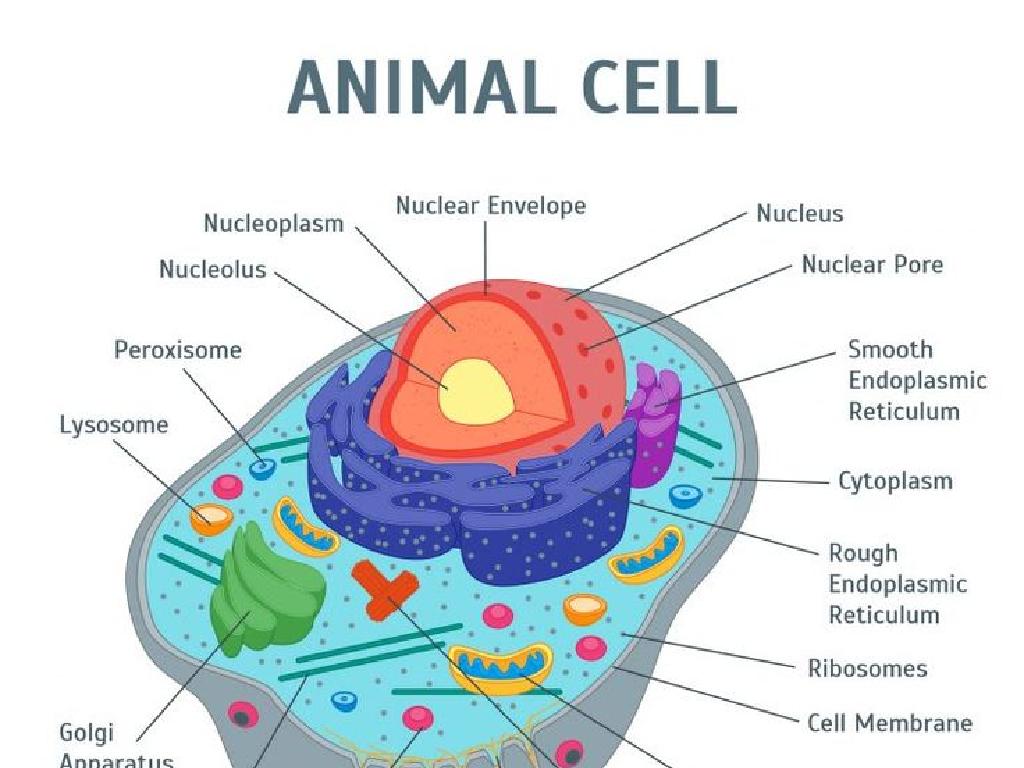Origins Of Scientific Names
Subject: Science
Grade: Fifth grade
Topic: Scientific Names
Please LOG IN to download the presentation. Access is available to registered users only.
View More Content
Exploring Scientific Names
– What are scientific names?
– They are unique names used by scientists for organisms.
– Reasons for using scientific names
– To avoid confusion and have a common language in science.
– The universal naming system
– It’s a standardized way to identify species worldwide.
– Significance in science
– Helps scientists communicate clearly about organisms.
|
This slide introduces students to the concept of scientific names and their significance in the scientific community. Scientific names, also known as Latin names, are unique identifiers given to organisms that allow scientists from all over the world to communicate without confusion. Emphasize the importance of having a universal system, which avoids the misunderstandings that can arise from common names that vary by region and language. This system is based on a binomial nomenclature, which includes the genus and species of the organism. Encourage students to think about how a universal naming system can be helpful in other areas of life as well.
Exploring Scientific Names
– What are scientific names?
– Unique names used by scientists for organisms
– Genus and Species: The Two Parts
– Genus: the group’s name, Species: the organism’s own name
– Examples: Homo sapiens, Felis catus
– Human beings are called Homo sapiens, house cats are Felis catus
– Significance of scientific names
|
Scientific names are unique identifiers given to organisms that allow scientists all over the world to communicate clearly about species without confusion. Each name has two parts: the genus, which is the broader classification grouping similar species, and the species, which is specific to the individual organism. For example, Homo sapiens is the scientific name for human beings, where ‘Homo’ is the genus and ‘sapiens’ is the species. Similarly, Felis catus is the scientific name for domestic cats. Understanding these names helps us categorize and study living things more effectively. Encourage students to think about why having a universal naming system might be important for scientists.
The Father of Taxonomy: Carl Linnaeus
– Meet Carl Linnaeus
– Swedish botanist who created a system to classify living things.
– His role in organism classification
– Organized living organisms into groups based on similarities.
– Development of binomial nomenclature
– Introduced a two-part naming system for each species.
– Linnaeus’ lasting impact
– His system is still used today to name and classify organisms.
|
Carl Linnaeus, a Swedish botanist, zoologist, and physician, is known as the Father of Taxonomy for his work in classifying organisms into a hierarchical structure. He developed the binomial nomenclature, a two-part naming system that includes the genus name followed by the species name. This system brought clarity and consistency to the naming of living things, allowing scientists to communicate more effectively about species. Linnaeus’ work laid the foundation for modern biological classification and nomenclature. Encourage students to appreciate the importance of this system and how it helps us organize and understand the diversity of life on Earth.
Latin – The Language of Science
– Why Latin for scientific names?
– Latin is a ‘dead’ language, not changing over time, making it stable for scientific use.
– Understanding Latin roots
– Roots form the basis of many scientific terms, helping us understand their meaning.
– ‘lupus’ and ‘rosa’ meanings
– ‘lupus’ is used in names for wolf species, ‘rosa’ for roses.
– Significance in science
|
Latin is the foundational language for scientific names because it is no longer spoken as a native language, which means it doesn’t change and remains consistent for scientific communication. By learning Latin roots, students can decipher the meanings of various scientific terms. For example, ‘Canis lupus’ is the scientific name for the gray wolf, and ‘Rosa’ is the genus for roses. Understanding these roots helps students make connections between scientific names and the characteristics of the organisms they represent. Encourage students to explore other scientific names and their Latin origins to build their vocabulary and comprehension of scientific nomenclature.
Crafting Scientific Names
– Rules for scientific names
– Binomial nomenclature: two-part format, Latin or Greek
– Writing names correctly
– Genus capitalized, species lowercase, both italicized
– Practice with a fictional plant
– We’ll invent a name for a new plant species together
|
This slide introduces the concept of scientific naming, or binomial nomenclature, which is a standardized way to name living organisms. The rules include using Latin or Greek words and a two-part name consisting of the genus and species. The genus name is always capitalized, while the species name is not, and both should be italicized or underlined if handwritten. To apply this knowledge, students will practice by creating a scientific name for an imaginary plant, which helps them understand the importance of each part of a scientific name and how it can describe characteristics of the organism.
Decoding Scientific Names
– Purpose of scientific names
– They reveal unique characteristics and lineage.
– Examples: Lion and Red Oak
– Panthera leo refers to a lion, Quercus rubra to a red oak.
– Activity: Unravel scientific names
– Find the meaning behind the names of different organisms.
– Share discoveries with the class
|
This slide introduces students to the concept of scientific names and their significance in biology. Scientific names, often in Latin, tell us a lot about an organism’s characteristics and its evolutionary history. For example, ‘Panthera leo’ tells us the organism is part of the Panthera genus, which includes big cats, and ‘leo’ indicates a lion. Similarly, ‘Quercus rubra’ reveals that the organism is a type of oak tree and ‘rubra’ signifies its red leaves. The activity encourages students to investigate the meaning behind various scientific names, enhancing their understanding of taxonomy. Teachers should prepare a list of scientific names for students to decode and facilitate a discussion where students can share their findings.
Scientific Names Around Us
– Discover scientific names daily
– Scientific names of common pets and plants
– Canis lupus familiaris (dog), Felis catus (cat), Rosa chinensis (rose)
– Local wildlife’s scientific names
– Example: Sciurus carolinensis (Eastern gray squirrel)
– Discuss the usefulness of scientific names
– Helps in accurate communication and learning about species’ relationships
|
This slide aims to make students aware of the scientific names they might encounter in their daily lives, such as those of their pets, garden plants, and animals they see around. It’s important to explain that scientific names are unique and recognized globally, which helps scientists and people around the world talk about the same species without confusion. During the class discussion, guide students to understand the benefits of using scientific names, such as clarity in communication, especially when a species has different common names in different languages or regions. Encourage them to think about how knowing scientific names can help in studying biodiversity and conservation efforts.
Class Activity: Scientific Name Scavenger Hunt
– Explore and find scientific names
– Match items to your list
– Work together in teams
– Collaboration can make the hunt more fun and educational
– Identify as many names as possible
– Use your observation skills to find all items
|
This activity is designed to get students actively engaged in learning about scientific names by exploring their school environment. Provide each team with a list of scientific names of plants, animals, or objects that can be found around the school. Encourage teamwork as they match real-world items to the scientific names on their list. This hands-on approach helps students understand the practical application of scientific naming and taxonomy. As a teacher, prepare a diverse list of names, ensure safety during the scavenger hunt, and consider having small rewards for the team that identifies the most items. After the activity, discuss the origins of some of the scientific names to deepen their understanding.
Wrapping Up: The World of Scientific Names
– Recap on scientific names
– We learned that every living thing has a unique scientific name.
– Importance of scientific names
– They allow scientists worldwide to communicate clearly.
– Quick quiz time!
– Test your knowledge with a few fun questions.
– Reflect on today’s discoveries
|
As we conclude today’s lesson, let’s review the key concepts we’ve covered about scientific names. We’ve learned that these names are unique to each species and are usually derived from Latin or Greek. They are crucial because they provide a universal language for scientists all over the world, avoiding confusion that can arise from local names. To ensure the students have grasped the lesson, conduct a quick quiz with questions related to the content taught. This interactive activity will help reinforce their understanding and make the learning process memorable. Encourage students to think about how scientific names might be useful in their own lives, such as when learning about different plants and animals.






